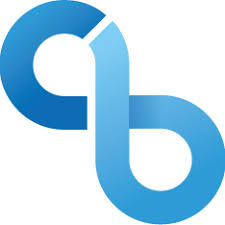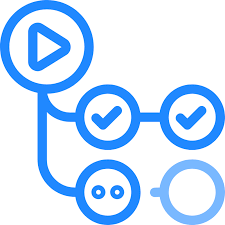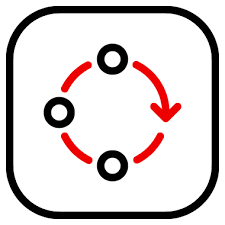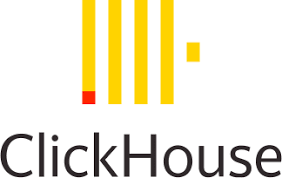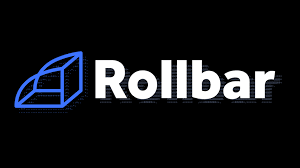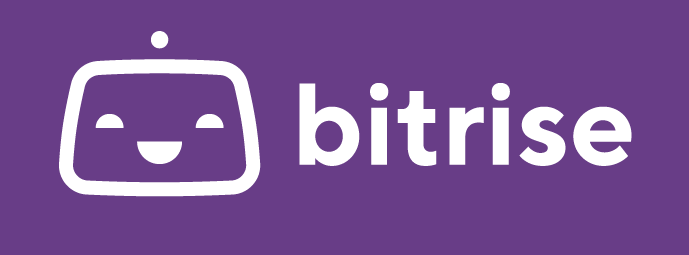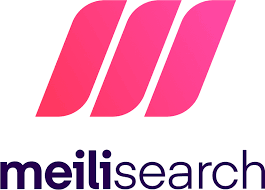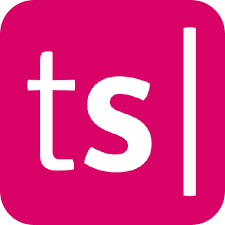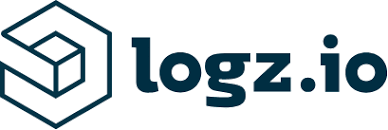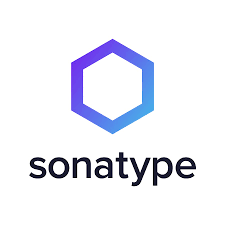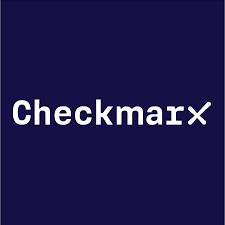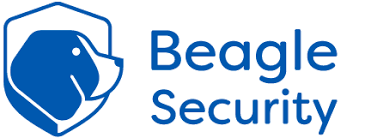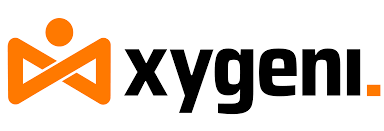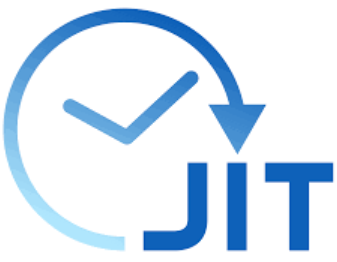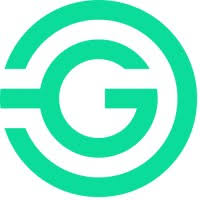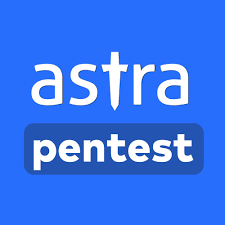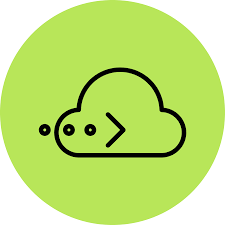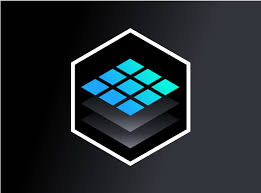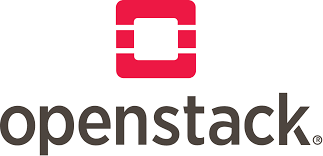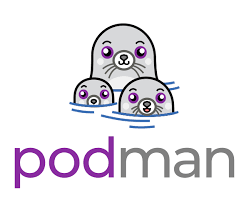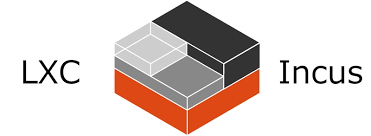If you’ve spent any time wrestling with Zabbix, you know it can do a lot – but sometimes it feels like you’re wrestling back. From complex setup to endless configuration tweaks, managing it can eat up more time than actually monitoring your systems. Luckily, there are alternatives out there that cut through the noise, letting you keep tabs on servers, apps, and networks without losing your sanity. In this article, we’ll explore the top Zabbix alternatives that help you stay on top of IT performance, minus the friction.

1. AppFirst
AppFirst provides a way for teams to deploy and manage their applications without having to spend time writing or maintaining infrastructure code. They focus on letting developers define the resources their applications need while the platform handles provisioning, security, monitoring, and auditing automatically. It works across multiple cloud providers, offering both SaaS and self-hosted deployment options, and is designed to simplify complex infrastructure management tasks.
The platform includes built-in logging, monitoring, and alerting so teams can keep track of their applications’ performance without setting up separate systems. It also centralizes cost visibility and auditing of infrastructure changes, giving teams insight into resource usage by application or environment. By handling cloud configuration and compliance automatically, AppFirst allows developers to focus more on building their applications and less on managing the underlying infrastructure.
Wichtigste Highlights:
- Automatic provisioning of infrastructure across AWS, Azure, and GCP
- Built-in logging, monitoring, and alerting
- Centralized auditing of infrastructure changes
- SaaS or self-hosted deployment options
- Cost visibility by application and environment
- Handles security standards and compliance automatically
Für wen es am besten geeignet ist:
- Development teams that want to focus on applications instead of infrastructure
- Companies using multiple cloud providers
- Teams without a dedicated DevOps or infrastructure team
- Organizations looking to simplify monitoring and compliance
- Teams aiming for faster deployment cycles without complex setup
Kontaktinformationen:
- Website: www.appfirst.dev
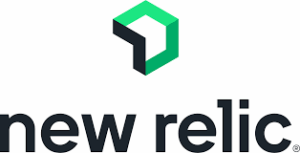
2. New Relic
New Relic provides tools for monitoring applications, infrastructure, and network performance from a single platform. They focus on giving teams visibility across their entire stack, from backend servers to frontend devices, and allow users to gather logs, metrics, and traces in real time. The platform supports integration with hundreds of technologies, helping teams centralize observability data without having to manage multiple monitoring tools separately.
The system includes dashboards, alerting, and error tracking to help teams detect changes and troubleshoot issues quickly. By collecting telemetry from different sources, New Relic enables teams to understand service dependencies and performance trends over time. This approach helps teams identify problems early and keep applications and infrastructure running reliably, without needing to manage complex configurations across multiple systems.
Wichtigste Highlights:
- Real-time monitoring of applications, infrastructure, and network
- Pre-built dashboards and customizable visualizations
- Error tracking and performance alerts in one place
- Supports hundreds of integrations across platforms and technologies
- Centralized log management with flexible search and segmentation
- Native support for OpenTelemetry to unify telemetry data
Für wen es am besten geeignet ist:
- Teams managing complex, multi-tier applications
- Organizations using multiple cloud and on-prem systems
- Developers and IT staff who want centralized visibility
- Teams tracking application performance and dependencies
- Companies looking to simplify monitoring across diverse tools
Kontaktinformationen:
- Website: newrelic.com
- Facebook: www.facebook.com/NewRelic
- Twitter: x.com/newrelic
- LinkedIn: www.linkedin.com/company/new-relic-inc-
- Instagram: www.instagram.com/newrelic
- Anschrift: 1100 Peachtree Street NE, Suite 2000, Atlanta, GA 30309, USA
- Phone: (415) 660-9701
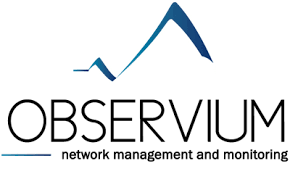
3. Observium
Observium provides tools for monitoring and managing network infrastructure in real time. They focus on automatically discovering devices, collecting performance metrics, and providing alerts when issues arise. The platform supports a wide variety of hardware and operating systems, allowing teams to monitor complex networks without having to configure each device manually. Its web-based interface shows both live and historical data, helping teams understand performance trends and network health over time.
The system includes features like network mapping, threshold alerting, and traffic accounting, which assist with capacity planning and reliability. Observium also allows integration with third-party tools and custom modules, enabling teams to consolidate data from different sources. Its approach to automatic collection and visualization reduces the need for manual monitoring, allowing IT staff to focus on addressing issues rather than tracking down them across multiple devices.
Wichtigste Highlights:
- Automatic discovery and monitoring of network devices and services
- Web-based interface with live and historical performance data
- Threshold alerting and event logging for proactive issue detection
- Traffic accounting and capacity planning support
- Integration with third-party tools and custom modules
- Support for a broad range of device types and operating systems
Für wen es am besten geeignet ist:
- Network administrators managing large or complex infrastructures
- Teams needing automated device discovery and monitoring
- Organizations tracking performance trends and capacity planning
- IT staff looking to consolidate monitoring from multiple sources
- Companies managing multi-vendor network environments
Kontakte:
- Website: www.observium.org
- E-Mail: observium-subscribe@lists.observium.org

4. SolarWinds
SolarWinds provides tools for monitoring and managing IT infrastructure across networks, servers, applications, and databases. They focus on giving teams visibility into both on-prem and cloud environments, allowing users to track performance, diagnose issues, and maintain system reliability. The platform combines monitoring, logging, and incident management in one place, giving teams a centralized view of their IT operations and helping them respond to problems more efficiently.
The system also includes features for database management, application performance tracking, and digital experience monitoring. Teams can correlate events, manage alerts, and optimize resources based on data collected from different parts of their infrastructure. With options for both self-hosted and SaaS deployments, SolarWinds supports a range of organizational setups, from small IT teams to larger enterprise environments, making it easier to keep systems running smoothly without switching between multiple tools.
Wichtigste Highlights:
- Monitoring for networks, servers, applications, and databases
- Centralized logging and incident management
- Event correlation and alert routing for faster troubleshooting
- Supports on-prem, cloud, and hybrid environments
- Tools for database optimization and performance tracking
- Flexible deployment with self-hosted or SaaS options
Für wen es am besten geeignet ist:
- IT teams managing mixed on-prem and cloud infrastructures
- Organizations tracking application and database performance
- Teams needing centralized monitoring and incident response
- Companies aiming to reduce downtime and improve operational visibility
- Enterprises looking to consolidate multiple monitoring functions in one platform
Kontaktinformationen:
- Website: www.solarwinds.com
- E-Mail: sales@solarwinds.com
- App Store: apps.apple.com/ru/app/dre-support-applet
- Google Play: play.google.com/store/apps/solarwinds.mobile.cs
- Facebook: www.facebook.com/SolarWinds
- Twitter: x.com/solarwinds
- LinkedIn: www.linkedin.com/company/solarwinds
- Instagram: www.instagram.com/solarwindsinc
- Adresse: 7171 Southwest Parkway Bldg 400 Austin, Texas 78735
- Telefon: +1-866-530-8040
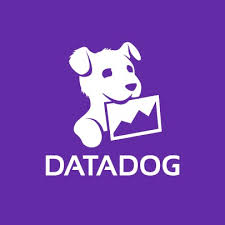
5. Datadog
Datadog provides a platform for monitoring applications, infrastructure, and cloud environments from a single interface. They focus on giving teams a complete view of their systems, including servers, networks, containers, and serverless applications. The platform collects logs, metrics, and traces in real time, allowing teams to see how components interact and to detect potential issues before they affect users. Its support for cloud-native environments and hybrid setups helps IT teams manage complex stacks without juggling multiple monitoring tools.
The system includes tools for application performance monitoring, network monitoring, and security tracking, along with dashboards that can combine data from multiple sources. Teams can set alerts, analyze trends, and correlate events to understand root causes more effectively. By centralizing observability across different layers of an IT environment, Datadog enables teams to keep track of performance and reliability while simplifying the troubleshooting process.
Wichtigste Highlights:
- Real-time monitoring of applications, infrastructure, and networks
- Support for containers, serverless, and hybrid cloud environments
- Centralized dashboards combining metrics, logs, and traces
- Application performance monitoring and error tracking
- Security monitoring and compliance features
- Integration with numerous third-party tools and services
Für wen es am besten geeignet ist:
- IT teams managing cloud-native and hybrid environments
- Developers and operations teams tracking application performance
- Organizations that need centralized logging and observability
- Teams monitoring complex, distributed systems
- Companies looking to correlate metrics, logs, and events in one platform
Kontaktinformationen:
- Website: www.datadoghq.com
- E-Mail: info@datadoghq.com
- Twitter: x.com/datadoghq
- LinkedIn: www.linkedin.com/company/datadog
- Instagram: www.instagram.com/datadoghq
- Address: 620 8th Ave 45th Floor New York, NY 10018 USA
- Telefon: 866 329-4466
6. Nagios
Nagios provides a platform for monitoring IT infrastructure, including servers, networks, applications, and services. They focus on giving teams visibility into system health through a combination of monitoring engines, agents, and plugins. The platform allows real-time tracking of system metrics and logs, helping teams detect issues before they escalate. Its modular design, including plugins and add-ons, enables monitoring of a wide range of environments and technologies without needing to manually configure every component.
The system also includes visualization tools, configuration interfaces, and scalability options to support larger deployments. Teams can organize monitoring tasks, apply automated alerts, and use community-built plugins to extend functionality. With both open-source and enterprise options, Nagios offers flexibility for teams to adapt monitoring to their specific infrastructure needs while leveraging a global community for support and shared resources.
Wichtigste Highlights:
- Monitoring for servers, networks, applications, and services
- Modular plugin architecture for extended monitoring capabilities
- Cross-platform agents for Windows, Linux, and Mac
- Visualization tools including dashboards, network maps, and graphs
- Scalable architecture for larger or complex environments
- Strong community support and thousands of shared plugins
Für wen es am besten geeignet ist:
- IT teams managing diverse or multi-platform infrastructures
- Organizations needing customizable monitoring through plugins
- Teams tracking performance, uptime, and reliability across systems
- Enterprises scaling monitoring across many devices and services
- Groups looking to leverage community-driven tools and extensions
Kontakte:
- Website: www.nagios.org
- Facebook: www.facebook.com/NagiosInc
- Twitter: x.com/nagiosinc
- LinkedIn: www.linkedin.com/company/nagios-enterprises-llc

7. Paessler PRTG
Paessler PRTG offers a platform to monitor IT infrastructure, covering networks, servers, databases, applications, and cloud services. They focus on giving teams a unified view of system health, using sensors to track performance and detect anomalies across devices and services. The platform supports real-time monitoring, visual dashboards, and notifications for unusual metrics, allowing teams to address potential issues quickly. Its flexibility allows users to configure monitoring objects to match the structure and needs of their infrastructure.
PRTG also provides tools for visualizing networks through maps and dashboards, making it easier to interpret complex data at a glance. Users can customize alerts, extend monitoring with custom sensors, and manage multiple devices through web interfaces or mobile apps. Its design accommodates a range of deployment sizes, from small setups to enterprise-level networks, making it adaptable for teams of different scopes and responsibilities.
Wichtigste Highlights:
- Monitoring across networks, servers, applications, and cloud services
- Real-time dashboards and visual network maps
- Configurable sensors for custom monitoring needs
- Alerts and notifications for unusual metrics or performance issues
- Mobile and web access for monitoring on the go
- API and custom extensions for flexibility and scalability
Für wen es am besten geeignet ist:
- IT teams overseeing multi-layered network infrastructure
- Organizations needing detailed visibility into server and application performance
- Teams that want customizable alerts and monitoring sensors
- Administrators managing cloud and on-premises environments
- Businesses of any size looking for a flexible, unified monitoring solution
Kontakte:
- Website: www.paessler.com
- E-Mail: info@paessler.com
- Instagram: www.instagram.com/paessler.gmbh
- Address: Paessler GmbH Thurn-und-Taxis-Str. 14, 90411 Nuremberg Germany
- Phone: +49 911 93775-0

8. Checkmk
Checkmk provides a platform for monitoring IT infrastructure across networks, servers, applications, containers, and cloud environments. They focus on helping teams maintain visibility into complex systems through automated discovery, agent management, and a library of over 2,000 vendor-maintained monitoring plugins. The platform is built to scale from mid-sized setups to enterprise-level deployments, making it possible to monitor hundreds of thousands of hosts and millions of services with minimal manual effort.
Their architecture supports automation and extensibility, allowing IT teams to integrate custom plugins or extend existing ones using the Check-API. Checkmk also emphasizes security with features like granular access control, encryption, and two-factor authentication. Users can monitor their infrastructure from centralized dashboards, visualize system performance at a glance, and resolve issues quickly using automated tools that reduce routine administrative tasks.
Wichtigste Highlights:
- Automated discovery and configuration of hosts and services
- Monitoring across hybrid IT environments, including cloud and on-premises systems
- Over 2,000 vendor-maintained monitoring plugins
- Scalable architecture for large infrastructures
- Granular access control, encryption, and two-factor authentication
- Extensible via API and custom plugins
Für wen es am besten geeignet ist:
- IT teams managing hybrid or large-scale infrastructures
- Organizations needing automated monitoring and minimal manual setup
- Administrators looking to extend monitoring capabilities through custom plugins
- DevOps teams responsible for containerized and cloud workloads
- IT service providers managing multiple customers’ environments
Kontakte:
- Website: checkmk.com
- E-Mail: sales@checkmk.com
- Facebook: www.facebook.com/checkmk
- Twitter: x.com/checkmk
- LinkedIn: www.linkedin.com/company/checkmk
- Anschrift: Checkmk GmbH Kellerstraße 27 81667 München Deutschland
- Phone: +44 20 3966 1150

9. Dynatrace
Dynatrace focuses on providing observability across applications, infrastructure, and cloud environments, with an emphasis on using AI to analyze and contextualize data. They enable IT teams to monitor performance, detect potential issues early, and automate responses across complex environments. Their approach covers everything from servers and networks to cloud workloads and containerized applications, giving teams a unified view of their IT operations without needing multiple disconnected tools.
The platform uses AI to help identify patterns, prioritize problems, and support decision-making in real time. Teams can extend the monitoring capabilities through integrations with common technologies and standards, including OpenTelemetry, Kubernetes, and various cloud providers. Dynatrace also emphasizes automation, letting teams handle routine tasks and focus on system improvements rather than manual oversight, while maintaining security and access controls across monitored environments.
Wichtigste Highlights:
- Full-stack monitoring for applications, infrastructure, and cloud
- AI-assisted analysis and problem detection
- Automation of routine monitoring tasks
- Integration with major cloud platforms, containers, and observability standards
- Real-time insights and contextual data analysis
- Tools for both IT operations and software delivery teams
Für wen es am besten geeignet ist:
- IT teams managing complex, hybrid environments
- Organizations with cloud-native and containerized workloads
- DevOps and SRE teams needing AI-assisted observability
- Teams looking to reduce manual monitoring work
- Enterprises seeking unified monitoring and analytics across systems
Kontakte:
- Website: www.dynatrace.com
- E-mail: dynatraceone@dynatrace.com
- App Store: apps.apple.com/us/app/dynatrace-4-0
- Google Play: play.google.com/store/apps/dynatrace.alert
- Facebook: www.facebook.com/Dynatrace
- Twitter: x.com/Dynatrace
- LinkedIn: www.linkedin.com/company/dynatrace
- Instagram: www.instagram.com/dynatrace
- Address: 280 Congress Street, 11th Floor Boston, MA 02210 United States of America
- Phone: 1-888-833-3652
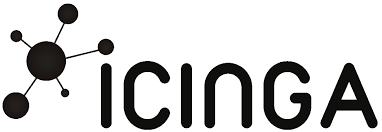
10. Icinga
Icinga provides open-source monitoring for servers, networks, and applications, designed to be flexible and adaptable to hybrid IT environments. They focus on giving teams visibility across their infrastructure while supporting automation and integrations to reduce manual work. Icinga allows monitoring of both static and dynamic resources, from on-premises servers to cloud and containerized workloads, with alerts and analytics to help teams stay aware of system health and performance.
The platform emphasizes adaptability, letting teams connect existing DevOps tools and create workflows that match their operations. Automation features and API-driven processes help maintain consistency and scale as infrastructure grows. Icinga also maintains a strong community-driven approach, with open-source foundations that encourage collaboration and shared problem-solving, while enterprise-ready features address scalability, security, and high availability.
Wichtigste Highlights:
- Infrastructure monitoring for servers, networks, and applications
- Automation and integration for streamlined operations
- Alerts, notifications, and analytics for proactive monitoring
- Support for cloud, containers, and hybrid environments
- Open-source with active community contributions
- Enterprise-ready scalability, security, and high availability
Für wen es am besten geeignet ist:
- Teams managing hybrid or dynamic infrastructures
- Organizations that want an open-source, flexible monitoring solution
- IT and DevOps teams needing automated workflows and API integrations
- Enterprises that require scalable, secure, and highly available monitoring
- Companies looking for community-supported monitoring with extensibility
Kontakte:
- Website: icinga.com
- E-Mail: info@icinga.com
- Facebook: www.facebook.com/icinga
- LinkedIn: www.linkedin.com/company/icinga
- Anschrift: Icinga GmbH Deutschherrnstr. 15-19 Nürnberg, Deutschland
- Phone: 49 911 9288555

11. LogicMonitor
LogicMonitor provides a unified observability platform that spans on-premises, cloud, and hybrid environments, giving teams visibility into infrastructure, applications, and digital services. They focus on connecting data from across the IT landscape to provide contextual insights, helping teams spot potential issues before they escalate. The platform collects performance metrics, logs, and events into a single view, allowing for faster troubleshooting and more informed decisions about infrastructure health and reliability.
The platform also includes AI-driven capabilities designed to reduce manual effort and alert noise, while providing predictive insights for IT operations. LogicMonitor emphasizes automation, integrations, and pre-built connectors to support a variety of IT workflows. Teams can tailor monitoring setups to their environment, and use the platform to streamline incident resolution, correlate data across sources, and maintain visibility across complex, dynamic systems.
Wichtigste Highlights:
- Unified observability for on-premises, cloud, and hybrid environments
- AI-driven alerting and predictive incident analysis
- Integration with existing IT and DevOps tools
- Centralized performance metrics, logs, and events
- Automation features to streamline monitoring and troubleshooting
- Support for digital experience and Internet performance monitoring
Für wen es am besten geeignet ist:
- IT and DevOps teams managing hybrid or multi-cloud environments
- Organizations seeking AI-assisted monitoring and incident reduction
- Teams needing centralized visibility for infrastructure, applications, and networks
- Companies looking to integrate monitoring across existing IT tools and workflows
- Teams aiming to reduce manual effort and alert fatigue while maintaining observability
Kontakte:
- Website: www.logicmonitor.com
- E-Mail: sales@logicmonitor.com
- Facebook: www.facebook.com/LogicMonitor
- Twitter: x.com/LogicMonitor
- LinkedIn: www.linkedin.com/company/logicmonitor
- Instagram: www.instagram.com/logicmonitor
- Address: 98 San Jacinto Blvd Suite 1300 Austin, TX 78701 USA
- Phone: 888 415 6442
12. Prometheus
Prometheus is an open-source monitoring solution designed to handle metrics from applications, systems, and services. They organize data into a dimensional time series format, allowing teams to track performance trends and identify issues over time. By collecting, storing, and querying metrics independently, Prometheus makes it possible to monitor distributed and dynamic environments without relying on external storage systems. Its architecture emphasizes simplicity, with standalone servers and minimal dependencies, making deployment across diverse environments straightforward.
A key part of their approach is using PromQL, a query language that lets teams correlate and transform metrics to generate alerts, dashboards, and visualizations. Alerting is handled separately through Alertmanager, giving teams flexible control over notifications and silencing rules. Prometheus also integrates widely with cloud-native platforms like Kubernetes, providing continuous monitoring for containerized services. Its large library of official and community-contributed instrumentation libraries and integrations helps teams pull metrics from a wide range of systems, making it adaptable to many monitoring scenarios.
Wichtigste Highlights:
- Open-source, community-driven monitoring solution
- Dimensional time series data model for flexible metric tracking
- PromQL query language for advanced metric analysis and alerting
- Standalone servers with local storage for simple deployment
- Alertmanager for notifications and silencing
- Integrations with cloud-native platforms and container managers
- Wide selection of instrumentation libraries for multiple languages
Für wen es am besten geeignet ist:
- Teams managing cloud-native or containerized environments
- Organizations seeking an open-source, customizable monitoring solution
- Developers and SREs who need fine-grained control over metrics and alerts
- IT teams looking for independent, self-contained monitoring servers
- Projects requiring integration with a wide range of systems and platforms
Kontaktinformationen:
- Website: prometheus.io
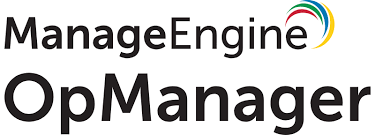
13. ManageEngine OpManager
ManageEngine OpManager focuses on monitoring network devices, servers, and virtual environments to provide a clear view of overall IT infrastructure health. They cover routers, switches, firewalls, load balancers, wireless controllers, and storage systems, helping teams track performance and spot issues before they affect users. The platform provides real-time data and allows for detailed troubleshooting, letting teams drill down to the root cause of problems and respond quickly. Its architecture supports both on-premises and distributed networks, giving visibility across multiple locations from a central console.
They also emphasize flexibility in visualization and reporting. Teams can build dashboards and maps to represent device health, network traffic, and business-critical metrics in a way that makes sense for their environment. Alerts are color-coded and classified by severity, enabling quick identification of issues, and mobile apps allow monitoring and basic troubleshooting on the go. OpManager’s approach integrates network performance, server health, and wireless monitoring, aiming to give IT teams a consolidated view of their entire infrastructure.
Wichtigste Highlights:
- Monitors network devices, servers, VMs, and storage systems
- Real-time visibility with detailed fault and performance insights
- Distributed network monitoring from a single console
- Customizable dashboards and business maps for visualization
- Alerts categorized by severity with notifications via email and SMS
- Mobile apps for monitoring and basic troubleshooting
- Supports WAN, wireless, and Cisco ACI monitoring
Für wen es am besten geeignet ist:
- IT teams managing large or distributed networks
- Organizations needing visibility across physical and virtual devices
- Teams that require centralized monitoring with remote probes
- Administrators looking for customizable dashboards and reporting
- Enterprises wanting integrated server, network, and storage monitoring
Kontakte:
- Website: www.manageengine.com
- E-Mail: tech-expert@manageengine.com
- Facebook: www.facebook.com/ManageEngine
- Twitter: x.com/manageengine
- LinkedIn: www.linkedin.com/company/manageengine
- Instagram: www.instagram.com/manageengine
- Adresse: 4141 Hacienda Drive Pleasanton CA 94588 USA
- Telefon: +1 408 916 9696

14. OpenNMS
OpenNMS is a flexible, open-source monitoring platform that can handle everything from networks to servers and applications. It’s especially handy if you’re managing a large or spread-out infrastructure – multiple sites, distributed networks, you name it. The platform is built to scale, so you’re not constantly worrying about whether it can keep up as your systems grow.
One of the things people like about OpenNMS is how adaptable it is. Being open-source means you can tweak it, extend it, and make it fit your specific needs instead of being locked into some rigid proprietary system. It also comes with automation and event management features, so you can reduce repetitive manual work and get alerts when things actually matter. And because it tracks both real-time performance and historical data, you can spot recurring issues, plan ahead, and keep everything running smoothly.
Wichtigste Highlights:
- Monitors networks, servers, and applications across distributed environments
- Scalable architecture for large or multi-site deployments
- Open-source and extensible platform
- Automated alerting and event management
- Historical performance tracking and reporting
- Integrates with a wide range of IT and network tools
- Modular design for flexible deployment and customization
Für wen es am besten geeignet ist:
- IT teams managing large or geographically distributed networks
- Organizations looking for an open-source, extensible monitoring solution
- Teams that need real-time monitoring and historical performance analysis
- Administrators who want customizable alerts and automated event management
- Enterprises integrating monitoring with existing IT systems and workflows
Kontakte:
- Website: www.opennms.com
- E-mail: contactus@opennms.com
- Facebook: www.facebook.com/OpenNMS
- Twitter: x.com/opennms
- LinkedIn: www.linkedin.com/company/the-opennms-group
- Address: 2871 Lake Vista Drive Lewisville, TX 75067
- Phone: +1 919-533-0160
Abschließende Überlegungen
Stepping back from the details, it’s clear that there’s no single monitoring solution that fits every team perfectly. Each alternative to Zabbix brings its own way of looking at infrastructure, network, and application health – some focus on simplicity and ease of use, others on scalability and deep customization, and a few lean heavily on automation and analytics. What matters most isn’t chasing the newest or flashiest tool, but finding a setup that actually works with the way your team operates day to day.
For IT teams, that often means balancing visibility with manageability. Some organizations might need a lightweight system that’s easy to tweak and extend, while others may prioritize a platform that can handle thousands of devices and multiple sites without breaking a sweat. By exploring these alternatives, teams can identify the approaches, integrations, and workflows that help them spot issues earlier, respond faster, and keep systems running smoothly. At the end of the day, it’s less about replacing Zabbix and more about finding the right combination of tools and practices that fit your environment – and your team’s rhythm.



